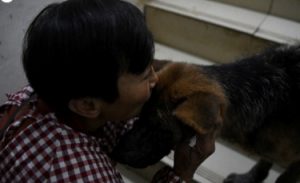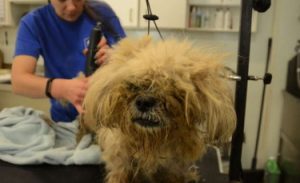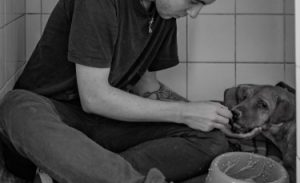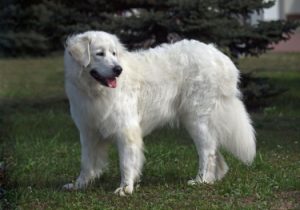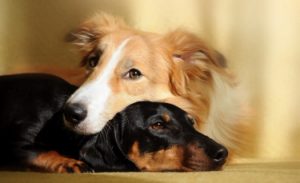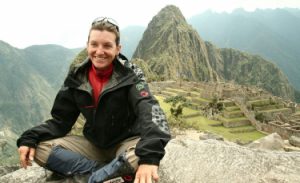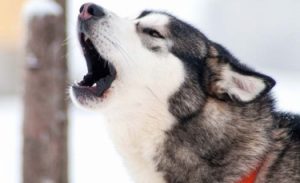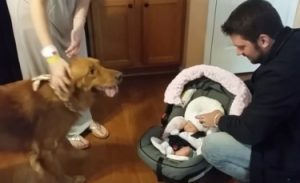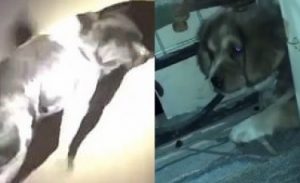Other names: Otter Dog, Otter Dog
The Otterhound is a large dog, built with strength and solidity, with a coarse, well-stocked coat, with straight and large limbs. The gait of the Otterhound is characterized by smooth and unobstructed movements, with long strides.
<!–
–>
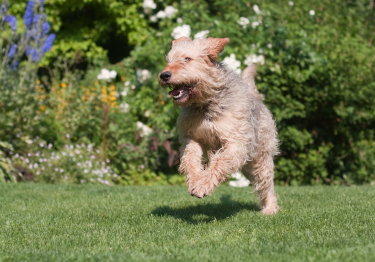
| Long | |
| Britain | |
| Big | |
| Round |
| Sex | Weight | Cut |
|---|---|---|
| Female | From 32 kg to 36 kg | From 60 cm to 63 cm |
| Male | From 45 kg to 52 kg | From 65 cm to 69 cm |
History of the breed
Also called Otter Dog, the Otterhound was, as its name suggests, developed specifically for otter hunting . This activity is however prohibited nowadays, which does not prevent this breed from asserting its aptitudes in many other fields. A scent dog, it is just as efficient and enduring on dry land, where it excels in tracking . He is also and above all capable of swimming for several hours, his webbed feet and his double, oily robe helping him in this area.
The Otterhound breed was definitively recognized by the FCI (Fédération Cynologique Internationale) on September 12, 1974. Its official FCI standard in force was published on October 13, 2010.
Physical features
His hair: long, dense, hard in texture but not in wire. The outer coat is associated with an undercoat, providing the dog with good protection against humidity. Softer on the head and lower limbs.
Its color: unicoloured, sand, red, wheaten, blue, grayish, with or without white markings on the head, chest, feet and end of the tail.
His head: well defined, taller than it is wide, well covered with coarse hair, with mustaches and a light beard. The skull is domed, the stop is clear but not exaggerated, the nose broad, the nostrils well open, the muzzle high and strong, the jaws strong, large and articulated in scissors, the zygomatics clear.
His ears: hanging, long, the front edge of which folds up or rolls up inwards. Furnished with abundant hair forming a fringe.
His eyes: slightly sunken in the sockets, displaying an expression full of intelligence, kindness and vivacity.
His body: of strong and harmonious construction. The neck is long, powerful, the top line horizontal, the back broad, the loins short and strong, the chest well let down and the ribs well carried back.
Its tail: strong at its attachment, tapering towards its end, attached high, carried high when the dog is active or awake.
Behavior and character
| Affectionate | |
|---|---|
| Calm | |
| Protective | |
| Independent | |
| Hunter | |
| Barks / howls |
Behavior with others
| Cohabitation with children | |
|---|---|
| Sociable with other animals | |
| Love strangers |
The Otterhound is a dog with a balanced temperament , particularly gentle and affectionate with his master and his family. Developed for hunting , today he is a pleasant companion who has retained a taste for work and activity.
The Otterhound
is it right for you? Take the test!
Education
| Clever | |
|---|---|
| Obedient |
It is important to bring both firm and gentle education to the Otterhound from an early age. It needs to be reframed to eliminate any manifestation of aggression, nervousness or unwanted behavior, but without resorting to brutality. Work, patience, rewards and encouragement make it possible to make a dog well educated and fulfilled.
Living conditions
| Suitable for apartment living | |
|---|---|
| Good for new masters | |
| Love it hot | |
| Love the cold |
The Otterhound mainly aimed at experienced masters , because its education should be early and firm to avoid behavioral problems. It can adapt to city life if it is walked enough on a daily basis, with the possibility of evolving in a natural environment (forest, countryside, beach …) from time to time. The ideal for this dog would be to have a large fenced outdoor area .
Health
| Solid | |
|---|---|
| Ease of gaining weight |
The Otterhound is a sturdy and resilient dog . Nevertheless, predispositions to certain pathologies or abnormalities are associated with the breed, including the following: elbow dysplasia, hip dysplasia, thrombocytopathy, sebaceous cysts (accumulation of sebum under the skin).
Hypoallergenic breed
No
Litter size
Between 4 and 8 puppies
| Major concerns |
|
|||
| Minor concerns |
|
| Occasional concerns |
|
||
| Suggested tests |
|
To protect yourself from these risks and insure your companion in the event of health problems, Woopets recommends an Otterhound dog insurance .

function showAssuranceForm () {var siteReferer = var id_race_association = ‘214’; //console.log(id_race_association);success: function (html) {}});}document.addEventListener (‘DOMContentLoaded’, () => {$ (‘# assuranceModalBanner’). on (‘show.bs.modal’, function (event) {showAssuranceForm ();});});
Life expectancy
Minimum: 10 years
Maximum: 12 years
The life expectancy of an Otterhound is, on average, between 10 years and 12 years.
Calculate the human age of your Otterhound!
To choose… 1 year 2 years 3 years Four years 5 years 6 years 7 years 8 years 9 years 10 years 11 years old 12 years 13 years 14 years old 15 years old 16 years old 17 years 18 years old 19 years old 20 years 21 years old
Maintenance and hygiene
| Ease of maintenance | |
|---|---|
| Cost of maintenance | |
| Hair loss |
| Drool level | |
|---|---|
| Ease of grooming |
Although having a double coat and very supplied, the Otterhound knows only moderate molts during which the hair loss is quite manageable if it is taken care of on a regular basis. Overall, its maintenance does not present any particular constraint .
It is recommended to brush the dog weekly , more frequently during molts. He does not ask for specific grooming. His ears should be examined to make sure there is no sign of any infection or dirt. The hairs around its mouth need to be washed often because dirt and food scraps easily accumulate there.
Her teeth need to be brushed regularly to eliminate tartar build-up and the proliferation of bacteria. If they do not wear out naturally, its claws need to be cut. If you are new to this, it is recommended that you seek advice from a veterinarian or groomer.
Price and budget
Purchase price
Mini
€ 1,200 Maxi
2000 €
The purchase price of an Otterhound is between € 1,200 and € 2,000.
Annual maintenance cost
Mini
800 € Maxi
1000 €
The annual maintenance cost of an Otterhound is between € 800 and € 1000.
No name is currently proposed. Use our tool to find the name of your Otterhound!
Food
The Otterhound needs high quality food , divided into 2 meals per day , suitable for their level of exercise, size and age. You should watch your diet to avoid overweight problems. As it can be subject to bloating, any intense physical activity should be avoided in the hour before and after a meal.
Want the best for your dog?
Create the tailor-made power supply for your Otterhound
I discover !
PROMO -30% | Delivered to you!
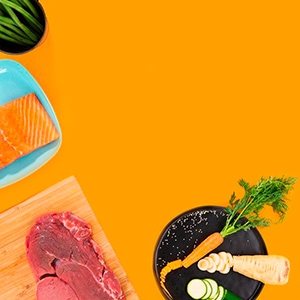
Physical activity
| Athletic | |
|---|---|
| Energy level | |
| Potential to play |
The Otterhound is an active dog who needs long daily walks , ideally 2. He will be delighted to be able to gallop freely and to move around a water point.
Competitions
| Classifications & Standards |
|
Others
| Master character <span class="btnTooltip qTip2" title="- Calm: the master must be gentle and know how to show patience. – Active: the owner must be energetic and dynamic to live in harmony with his dog. – Hyperactive: the owner must be stimulating and very restless to suit the temperament of his dog.”> |
Active |
|---|
FCI Information
FCI No.
294
FCI Group
Group 6: Hounds, Blood Test Dogs and Related Breeds
Recognized by FCI
Since 1974
</div


